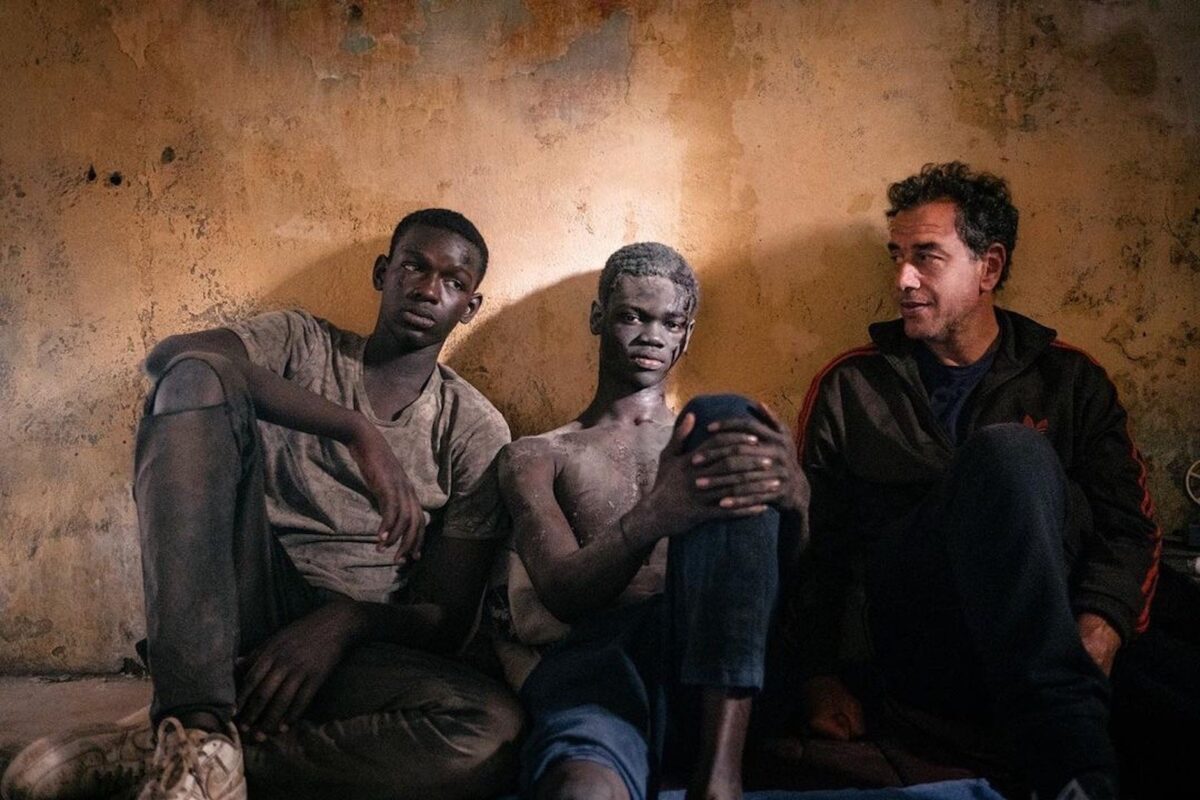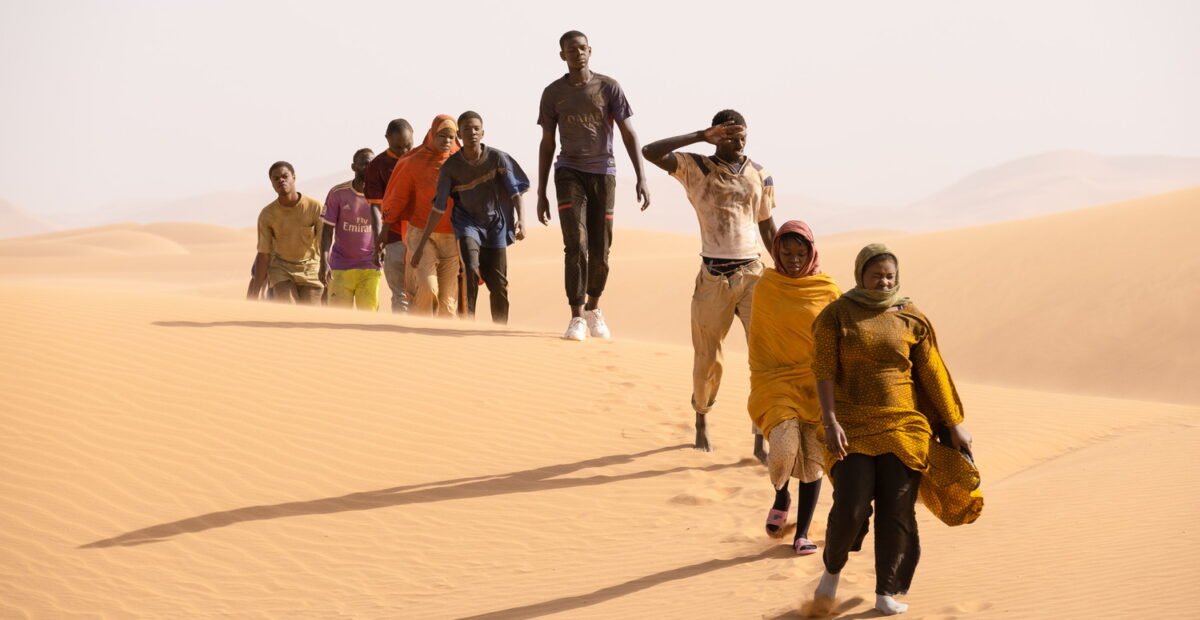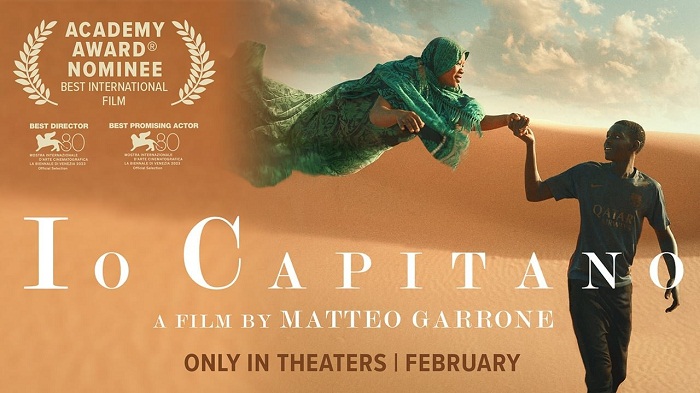Former US President Donald Trump has said migrants are ‘poisoning the blood of the US’ and claims they are ‘prisoners, murderers, drug dealers, mental patients, and terrorists’. The potential next US president has frequently called them ‘animals’. Sunak is determined to stop the boats’. Flouting international law, he wants to send them to Rwanda, which the Supreme Court has defined as ‘unsafe’. Keir Starmer is against this specific policy, but he still aims to reduce overall migration levels. He does not argue for safe and secure legal routes for asylum seekers but to step up a blitz against the ‘criminal gangs’ and speed up the application process. None of them spend any time defending migrants’ rights or explaining they are coming here because the West’s imperialism helped impoverish their countries (and continue to do so). These politicians promote an economic system that reproduces the extreme inequality between African living standards and those in more industrialised countries.
Io Capitano rescues the humanity and dignity of these millions of migrants from their ‘othering’ and dehumanisation by most of the mainstream media and politicians. The migrants are reduced to ‘boats’ and numbers are cut back by both the Tories and the Labour leadership. It has been far too long since a prominent Labour politician has forcefully spoken out about the tragic deaths of thousands of migrants drowning in the Mediterranean Sea and off the UK coast. When will they finally condemn the disturbingly callous and inadequate response from the coastguard and naval services to this ongoing humanitarian emergency?
“Io Capitano rescues the humanity and dignity of these millions of migrants from their ‘othering’ and dehumanisation by most of the mainstream media and politicians.”
Seydou and Moussa’s Journey Begins
This film works in a very simple, visceral way. It starts in Senegal, showing us the families of our two protagonists, Seydou and Moussa, two fifteen-year-olds, played brilliantly by Seydou Sarr and Moustapha Fall. They are not starving and have solid families, but life is a daily struggle, and future careers are limited. The two lads scrimp and save to finance their trip, telling their mums they are playing football while they are working at gruelling odd jobs. Their mobile phones provide images of a better life in Europe. Despite being warned against going by one of their neighbours, they leave, not bearing to tell the truth to their mothers. Their motivation is clear: to go abroad, work for a period, and provide their mothers and family with a more secure future. Italian migrants did exactly that during the post-war boom and continue to do so today.
Garrone’s choice of backstory is sociologically accurate. The migrants attempting these perilous journeys are often not the most destitute or impoverished from their countries of origin. You need to raise money; you need skills, courage, and resilience. As we see in the movie, capitalist bosses are quite happy to exploit those qualities.
“Garrone’s choice of backstory is sociologically accurate. The migrants attempting these perilous journeys are often not the most destitute or impoverished from their countries of origin.”

The Perils of Crossing the Sahara
A succession of ruthless traffickers swiftly shatters Seydou and Moussa’s naivety, extorting far more of the young men’s hard-earned savings than they had ever anticipated. Endurance is required, as we see them forced to trek across a sea of desert dunes. The traffickers abandon anyone who falls off the trucks. There is an atrocious incident when Seydou rushes back to help an older woman who has collapsed. He can do nothing, so he must abandon her.. The cinematography in these scenes captures the sheer vastness of the Sahara and the determination of the people snaking through it in a lengthening line. Militias, corrupt border guards, and soldiers routinely rob the migrants at various points along their route. During one such confrontation, the militia discovers Moussa trying to hide his money by inserting it into his rectum, resulting in his separation from Seydou.

Exploitation and Solidarity in Libya
Armed groups in Libya, a country currently fractured into two failed states, detain the migrants in prison once they arrive.The traffickers torture and threaten the migrants, forcing them to provide a telephone number so they can extort even more money from their families back home. Garrone is skilled at communicating violence and terror, as we saw in his previous films, Dogman and Gommorah. It is gut-wrenching stuff. In his exposé of the migrants’ hardships, Garrone notably omits any depiction of the sexual abuse that women endure on these perilous journeys.
Amid the terror and despair, there is human solidarity. An older worker helps Seydou escape the prison by taking him on as a sort of apprentice to his bricklaying skills. We see the guards sell them on to a contractor who needs skilled men to build walls and an ornate fountain. The film lays bare how capitalism shamelessly exploits and profits from the continued existence of subordinate pre-capitalist forms of production, such as slavery.
“The film lays bare how capitalism shamelessly exploits and profits from the continued existence of subordinate pre-capitalist forms of production, such as slavery.”
Briefly, there is respite, and this means they are able to get to Tripoli and the boats that the traffickers organise to Italy. Seydou’s goodness is reflected in his decision to wait to see if Moussa turns up. Different nationalities organise a basic solidarity, providing shelter and job openings in the city. After locating Moussa, they discover his leg is in dire condition. The urgency to reach Italy intensifies, as he desperately needs proper medical treatment at a hospital.
The Treacherous Mediterranean Crossing
Though they require additional funds, the migrants secure a spot on the boat under the condition that Seydou, despite his inability to swim, agrees to act as the vessel’s captain..The traffickers do not expose themselves by piloting the boats. The smugglers seek out a migrant, ideally a minor, who they can more easily deceive with false promises of avoiding imprisonment. After a five-minute training session, Seydou captains the boat. The British courts have prosecuted a ‘captain’ who has claimed he was trafficked.
TV never really shows the life-threatening conditions on the boats. Here we see it close up. The pregnant woman has no space to lie out, and at a certain point, Seydou discovers another group of suffocating migrants holed up in the engine room. It stands in comparison with those prints showing how the 18th Century slave ships systematically calculated how to pack in the maximum number of African slaves. History does sometimes repeat itself.
In many ways, this is one of Garrone’s most conventional films. The story reflects the timeless narrative of the Odyssey, a classic tale with roots in ancient Greek mythology and other civilisations’ legends.The narrative structure is straightforward; we follow in Seydou’s footsteps. A couple of magic realism scenes are folded in to reflect Seydou’s dreams and fears, but overall, it is the universal story of the good guy overcoming the odds—Hollywood has made it thousands of times. It is the content Garrone inserts—the migrants whom he humanises—that makes this film worthwhile.

Indeed, it was a box office and critical success in Italy. It was chosen as Italy’s nomination for the International Oscar Award. Pope Francis requested a special screening. This matters, the current far right Meloni government in Italy partly built its winning electoral coalition on anti-migrant rhetoric. Matteo Salvini, a prominent leader of the far right La Lega party, is currently facing prosecution for his actions as interior minister, during which he officially blocked the rescue of migrant boats.
While the film itself does not explicitly state how Europe and Italy are culpable for two of the depicted atrocities, it could have alluded to their responsibility without compromising the story’s immersive realism. The detention centres in Libya and other anti-migrant measures are supported in different ways. Minitti, a left-centre politician from the Democratic Party (PD), was the minister who originally started this collaboration with the Libyan authorities. Secondly, only the Maltese authorities are involved in the film when Seydou desperately calls coastguards for help; they have not reached Italian waters. The state broadcaster, RAI, helped finance the film, so whether the director made some compromises on this in order to secure funding is unclear.
“While the film itself does not explicitly state how Europe and Italy are culpable for two of the depicted atrocities, it could have alluded to their responsibility without compromising the story’s immersive realism.”
Of course, you cannot accuse a dramatic film of not being a documentary. Its message and impact are still progressive, but many films, even from the big studios, often include a few sentences in the final credits that provide appropriate true facts. For example, you could have included some statistics about how many migrants have died in the Med in the last ten years or so—25,000 since 2014, according to the Missing Migrant Project, which says this is certainly an underestimate. A sentence about the detention centres and Italian involvement, as well as the failings of the Italian state to provide adequate rescue services, would have also been possible. Another sentence could have hinted at the severe mistreatment migrants face upon arriving in Italy.
Although the film powerfully indicts human tragedy, it fails to really link it with how the system operates. How capital and imperialism destroy nature and exploit Africa so people are pushed to flee. The story can effectively convey this harsh reality through subtle allusions without compromising its sense of immediacy and authenticity. Grapes of Wrath by John Ford or Rocco and his brothers by Visconti both deal with migration but manage to get one or other of the characters to link their individual or collective problems with the control of the powerful and their system. Like Garrone, the great Italian neo-realist directors of the post-war period used unknown actors and exposed gritty realities, but there was often more of a political edge to their films.
After seeing the movie, we discussed how a short ‘one year later’ scene could have been added. It would have shown Seydou and Moussa working in the fields picking tomatoes for camorra (mafia)-controlled companies in Pomigliano, near Naples. Employers pay migrant workers very low wages, force them to live in poor housing, and brutally repress them if they speak up. Such a scene would have shown how Italy is part of an international network of exploitation. Extreme heat exhaustion has killed migrant workers, while ruthless mafia gangs have brutally gunned others down.
Despite the limitations we have indicated above, it is still a film we should see and promote. Seydou’s eyes and face and his heroic humanity will remain in your memory for some time.
Art (47) Book Review (102) Books (106) Capitalism (64) China (74) Climate Emergency (97) Conservative Government (90) Conservative Party (45) COVID-19 (43) Economics (36) EcoSocialism (48) Elections (75) Europe (44) Fascism (52) Film (47) Film Review (60) France (66) Gaza (52) Imperialism (95) Israel (103) Italy (42) Keir Starmer (49) Labour Party (108) Long Read (38) Marxism (45) Palestine (133) pandemic (78) Protest (137) Russia (322) Solidarity (123) Statement (44) Trade Unionism (132) Ukraine (324) United States of America (120) War (349)

